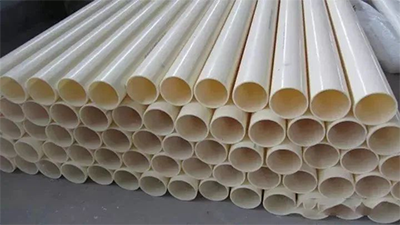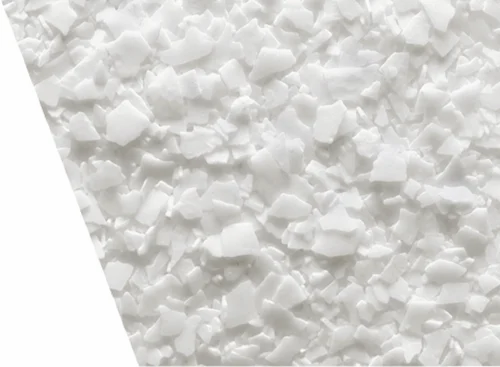PE Wax for PVC Production
Application
Function of PE Wax for PVC Production
When you dive into PVC manufacturing, polyethylene wax plays a crucial role. From its unique chemical composition to its comparative advantages over other lubricants, we found the integral role that polyethylene wax plays in PVC production.
1. PE Wax is The Mainstay of PVC Products
PE wax, also known as polyethylene wax, is a vital component in the production of PVC (polyvinyl chloride) products. As the backbone of PVC formulations, PE wax plays a crucial role in enhancing the overall performance and quality of PVC products. PE wax is a type of synthetic wax derived from polyethylene, a widely used polymer. It is characterized by its low melting point, high hardness, and excellent lubricating properties. These unique characteristics make it an ideal additive for PVC processing. When added to PVC formulations, PE wax acts as a lubricant and processing aid, improving the flow properties and reducing friction during the manufacturing process. This results in smoother extrusion or injection molding, allowing for easier shaping and forming of PVC products.
PE Wax is often referred to as the mainstay of PVC products due to the pivotal role it plays in the manufacturing process. Polyethylene wax enhances the surface finish of PVC products, providing a glossy appearance and improving scratch resistance. It also helps to reduce the adhesion of PVC to metal surfaces, preventing sticking or blocking issues. Furthermore, PE Wax plays a critical role in maintaining the integrity and durability of PVC products. It allows for a higher level of consistency in product quality, ensuring that PVC products can withstand the tests of time and usage.
PE wax also contributes to the overall mechanical strength and impact resistance of PVC products. It improves the fusion between PVC resin particles, resulting in a more cohesive structure and enhanced durability. Whether used in PVC pipes, profiles, cable insulation, or other PVC applications, PE wax plays a critical role in ensuring the integrity and performance of the final product.
2. Understanding the Chemical Composition of PE Wax in PVC Manufacturing
PE wax is primarily composed of long-chain linear hydrocarbons derived from ethylene polymerization. The molecular structure of PE wax consists of polyethylene chains with varying degrees of branching and molecular weight distribution. These characteristics influence the physical and chemical properties of the wax, making it suitable for use as a processing aid and modifier in PVC formulations.
The most defining chemical property of polyethylene wax is its high degree of crystallinity, which results from the linear and symmetrical structure of the polymer. This crystallinity provides PE Wax with its unique set of properties, including its high melting point, its toughness, and its resistance to chemical impacts. The chemical composition of PE wax typically includes saturated aliphatic hydrocarbons, which contribute to its low reactivity and inert nature. This characteristic makes PE wax compatible with PVC resins and other additives commonly used in PVC processing. In the manufacturing process of PVC, PE Wax acts as both an external and internal lubricant. Its chemical structure allows it to improve the flow of the PVC blend during the molding process, reducing the friction between the PVC grains and the metal surfaces of the processing equipment. Moreover, it also helps in improving the thermal stability of PVC by increasing its resistance to heat degradation.
3. Role and Benefits of PE Wax in PVC Industries
(1) Role of PE Wax in PVC Industries
- Lubricant: PE Wax serves as an exceptional lubricant during the manufacturing of PVC. Its low viscosity and high melting point ensure that PVC can smoothly move through manufacturing machinery, reducing friction and preventing equipment damage.
- Processing Aid: The addition of PE wax in PVC formulations contributes to the enhancement of the surface finish of finished products. It imparts a glossy appearance to PVC items, improving their aesthetic appeal and marketability.
- Heat Stabilizer: Polyethylene wax prevents degradation of the PVC mixture during the heating phase of the production process due to its high melting point.
(2) Benefits of PE Wax in PVC Industries
- Fusion and Cohesion Enhancement: Ppolyethylene wax facilitates the fusion and cohesion of PVC resin particles during processing. This leads to better fusion of PVC compounds, ensuring uniformity and integrity in the final products. The cohesive structure achieved with the help of PE wax improves the mechanical strength and impact resistance of PVC items.
- Anti-blocking and Release Properties: PE wax helps prevent blocking issues by reducing the adhesion of PVC to metal surfaces, preventing sticking and ensuring smooth release during processing and handling. This property is particularly beneficial in applications where PVC products come into contact with molds, packaging, or other surfaces.
- Enhanced Product Durability: The addition of PE Wax increases the durability of PVC products. The wax imparts excellent hardness, improving the product’s longevity and resistance to wear and tear.

4. Comparative Analysis: PE Wax vs Other Lubricants in PVC Production
PE wax and other lubricants play crucial roles in PVC (polyvinyl chloride) production, each offering unique characteristics and benefits. Here's a comparative analysis of PE wax versus other lubricants commonly used in PVC production:
(1) PE Wax
Advantages
* Excellent internal and external lubrication properties, reducing friction during processing.
* Acts as a processing aid, improving the flow properties of PVC compounds.
* Enhances surface finish and scratch resistance of PVC products.
* Promotes fusion and cohesion of PVC resin particles, leading to improved mechanical strength.
* Provides anti-blocking properties, preventing adhesion of PVC products to surfaces.
* Exhibits good compatibility with PVC resins and other additives.

(2) Paraffin Wax
Paraffin wax, a petroleum by-product, is another commonly used lubricant. It’s characterized by a lower melting point and viscosity compared to PE Wax. However, its lower heat stability can lead to earlier degradation during PVC processing, which can potentially affect the product's quality.
(3) Microcrystalline Wax
Microcrystalline wax, another petroleum derivative, has a higher melting point and molecular weight than paraffin. It provides good lubrication but tends to be less efficient in improving the flow characteristics of PVC.
(4) Montan Wax
Offers good heat resistance and anti-blocking properties. But limited processing aid capabilities compared to PE wax.
In Conclusion
PE Wax offers several advantages in PVC production compared to other commonly used lubricants, making it a preferred choice in many PVC manufacturing processes. Because PE wax stands out due to its multifunctional capabilities, offering excellent lubrication, processing aid, surface enhancement, fusion improvement, and anti-blocking properties. While other lubricants such as paraffin wax, montan wax, and fatty acid amides have their own advantages, they may not provide the same comprehensive range of benefits as PE wax in PVC production. The versatility and overall performance of PE wax make it a highly desirable additive in the PVC industry.
QUICK LINKS
PRODUCTS
CONTACT US
Tel : +86 532-87655918
E-mail : sales@qdsainuo.com
Address : Biulding No 15,Torch Garden Zhaoshang Wanggu, Torch Road No. 88,Chengyang,Qigndao,China
Superior Quality, Excellent Service!
Contact us for additional information or to explore partnership opportunities.
+86 18765238781
